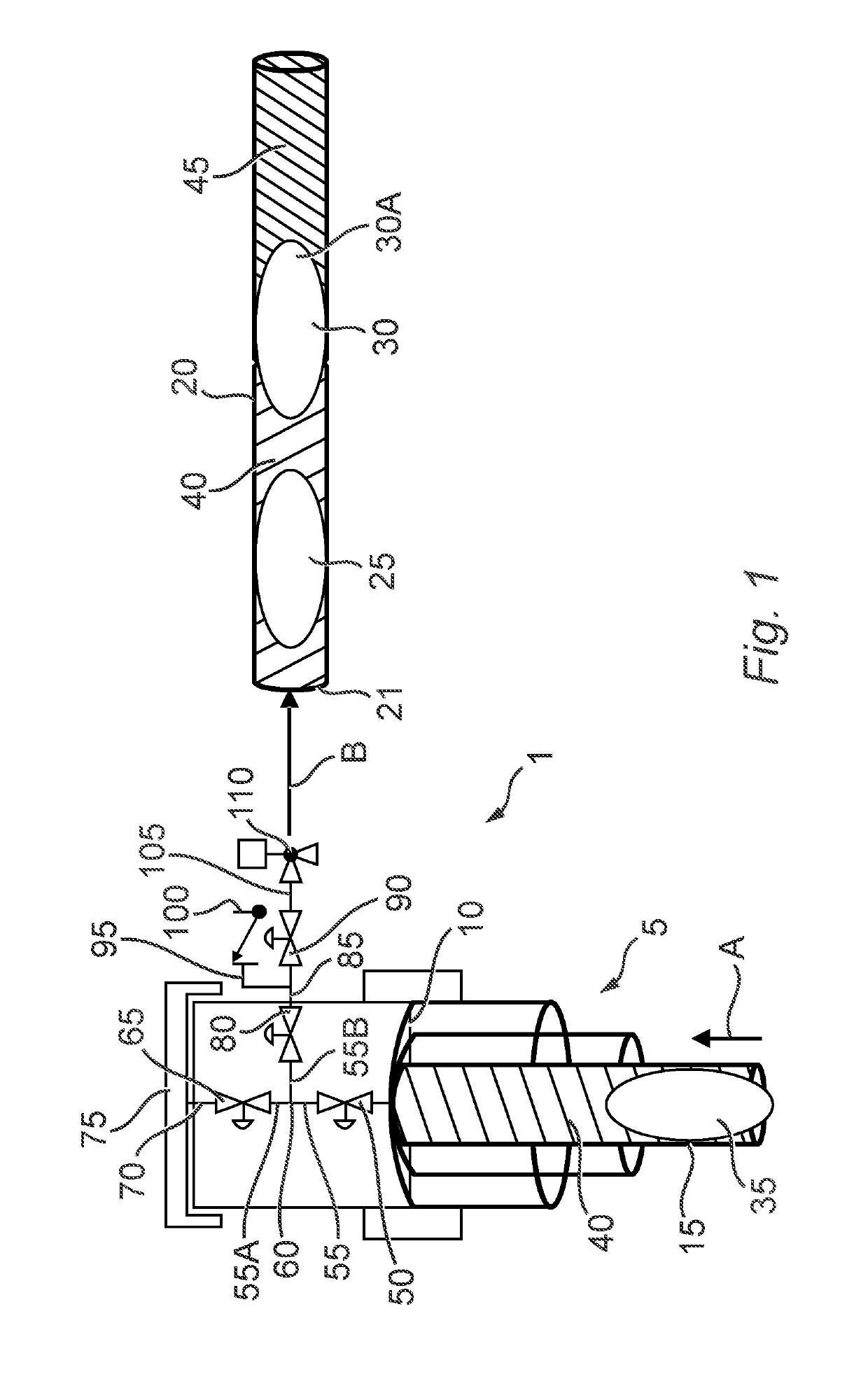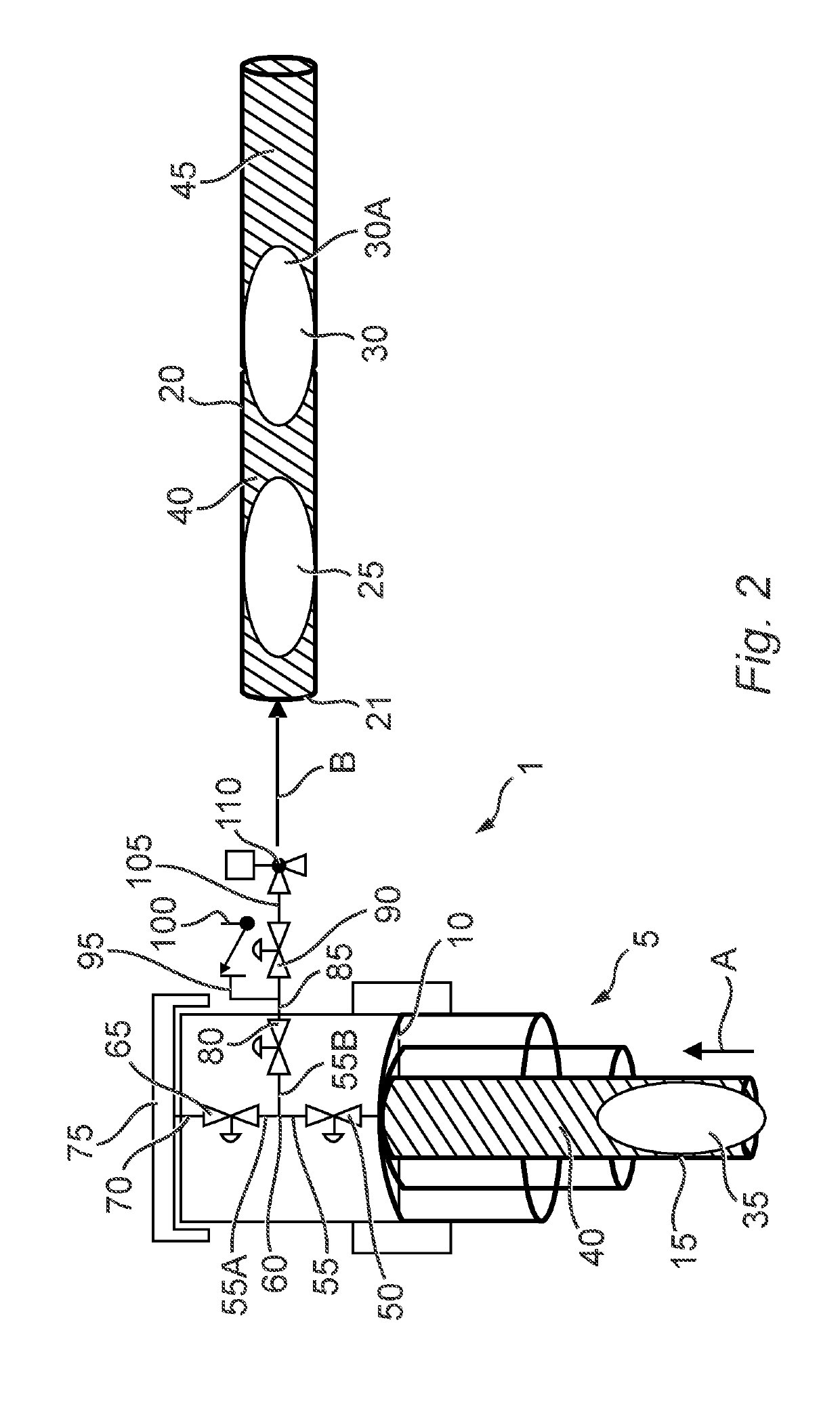Depressurisation method and apparatus for subsea equipment
a technology of subsea equipment and depressurisation method, which is applied in the direction of fluid removal, earth-moving drilling, and well accessories, etc., can solve the problems of affecting the operation of the equipment, and restricting the flow of produced fluid, so as to reduce the pressure of the remaining fluid, avoid the high hydrostatic pressure, and easy to install
- Summary
- Abstract
- Description
- Claims
- Application Information
AI Technical Summary
Benefits of technology
Problems solved by technology
Method used
Image
Examples
Embodiment Construction
[0041]It has been surprisingly found by the inventors that improved removal of hydrates from subsea equipment can be provided using the methods and apparatus of the invention. Many of the existing methods of removing hydrates involve the use of dedicated vessels. For example, a first dedicated vessel is required for the deployment and recovery of the apparatus used in these known methods, whilst a second dedicated vessel is needed when carrying out the method (ie the depressurisation phase). This second vessel needs to be capable of recovery and on-board storage of the depressurised production fluid from the subsea equipment. The availability of such vessels can be limited, and in addition their use adds cost. The methods and apparatus of the invention do not require a specially adapted vessel and can therefore reduce costs. Instead, they can be laid and operated by the same single vessel, which does not need to be capable of storing the production fluid from the subsea equipment.
[0...
PUM
 Login to View More
Login to View More Abstract
Description
Claims
Application Information
 Login to View More
Login to View More - R&D
- Intellectual Property
- Life Sciences
- Materials
- Tech Scout
- Unparalleled Data Quality
- Higher Quality Content
- 60% Fewer Hallucinations
Browse by: Latest US Patents, China's latest patents, Technical Efficacy Thesaurus, Application Domain, Technology Topic, Popular Technical Reports.
© 2025 PatSnap. All rights reserved.Legal|Privacy policy|Modern Slavery Act Transparency Statement|Sitemap|About US| Contact US: help@patsnap.com



